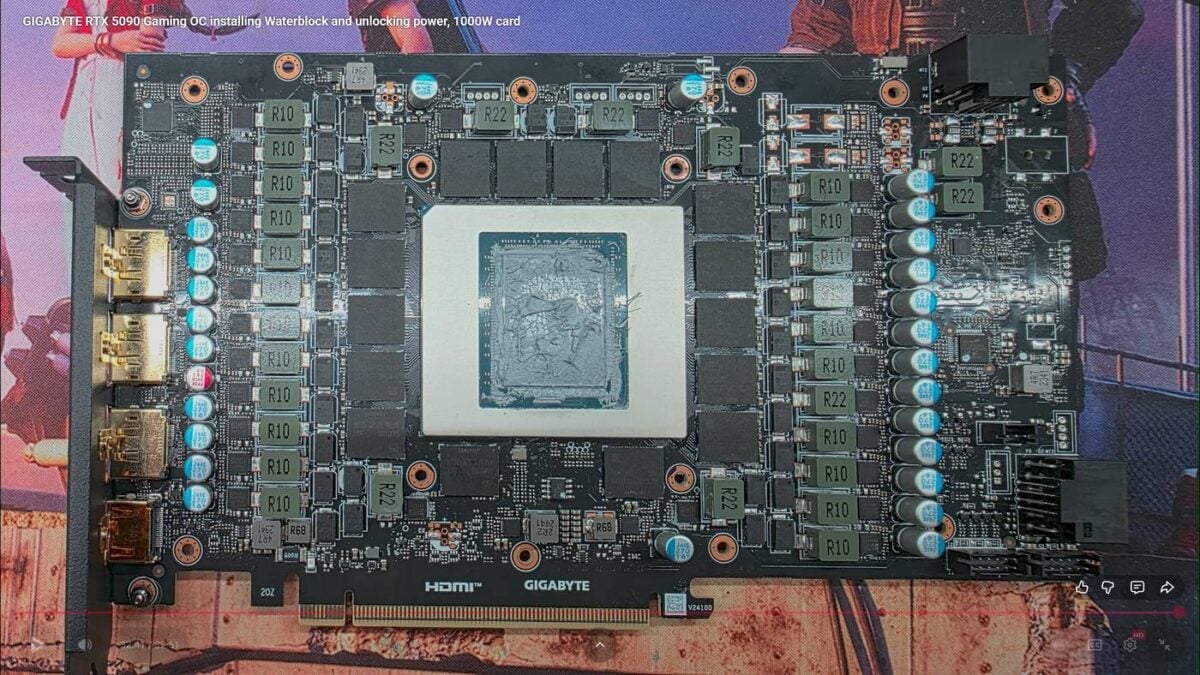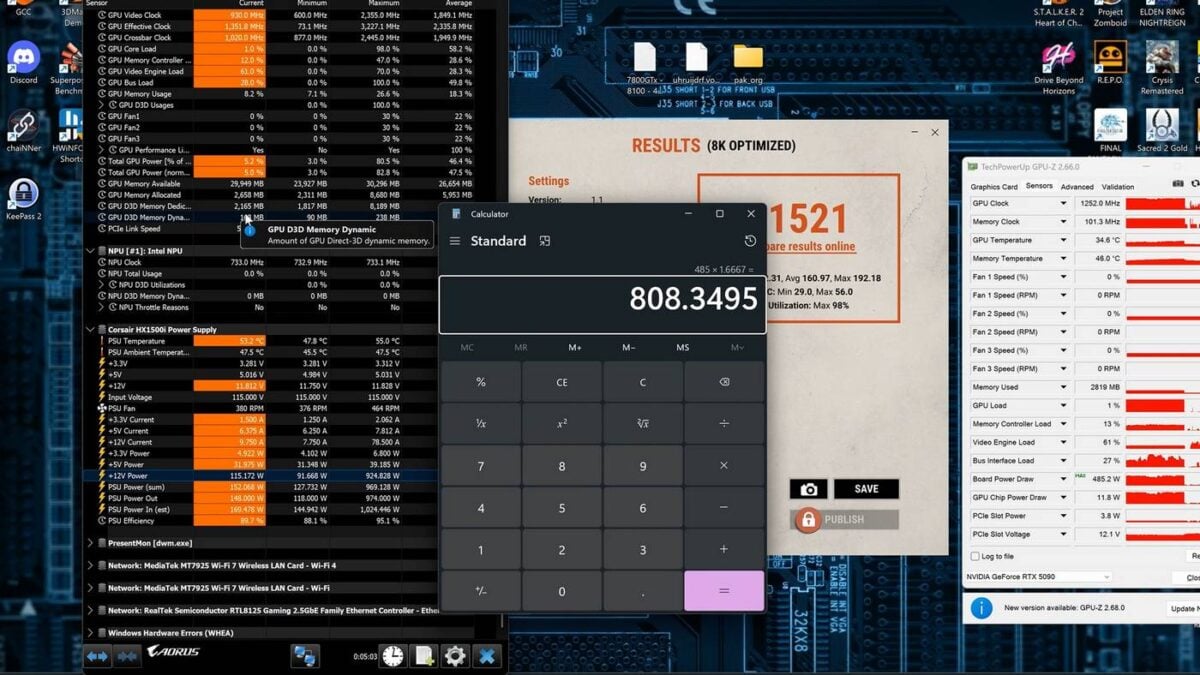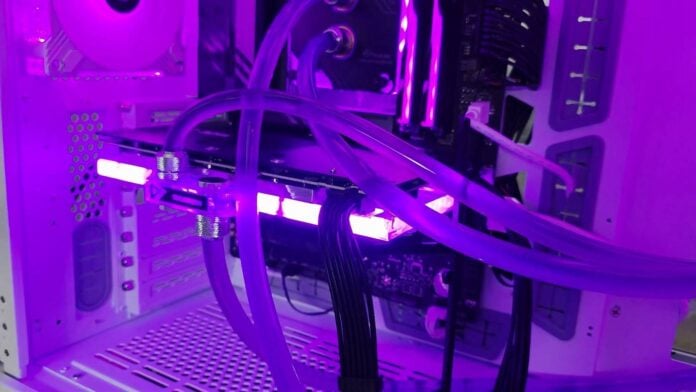A modder has tricked his RTX 5090 into taking more power, giving the GPU enough juice to muster fifth place in 3DMark. Sharing the video on YouTube, the user modified his Gigabyte RTX 5090 Gaming OC with a shunt mod, while adding another 12V-2×6 connector to spread the 913W load. The results are quite impressive, scaling nearly linearly with the additional power.
At a time when GPU owners dread the 12V-2×6 and its melting risks, modder Yugimuru thinks the opposite, leveraging the cables’ high-power capacity to boost his GPU’s performance. To increase the GPU’s power limit, Yugimuru combined the well-known method of shunt modding with a dual 12V-2×6 power delivery system. The former tricks the graphics card into thinking it is pulling less power than in reality, whereas the latter spreads the current between two cables and connectors to avoid any PSU-side limitation or overheating.
However, since dual 12V-2×6 RTX 5090s are rare, the modder took advantage of his card’s PCB design, which features two interlinked power planes. After making sure the secondary power plane was working, he soldered the second 12V-2×6 header and started feeding the card via both. Combined with the shunt mod, the card’s smarts think that it only consumes around 545W, while in reality it gobbles up more than 900W.

Yugimuru started his overclocking session by leaving the card at stock condition, thereby allowing it to take as much power as it wants. With the card accessing around 700W, the RTX 5090 managed 18,951 points in Unigine Superposition, which is around 16% higher than the non-modded, air-cooled card. Since the Gaming OC comes with a 600W power limit, this means that the 16% extra performance costs 16% more power, which is fair.
Moving to 3DMark Steel Nomad, the modded card delivered a less impressive 14,939 points, which is only 3% better than the average score of the RTX 5090. Things changed however when overclocking entered the party, allowing the card to reach 15,798 points in the same test, though at above 800W power consumption. Further tweaks using Gigabyte Control Centre allowed Yugimuru to claim fifth place on the leaderboard with 16,543 points. At the same time, the GPU was clocking up to 3.2GHz, about 300MHz higher than stock configuration.

To ensure the GPU was well-cooled, Yugimuru installed a liquid-cooling block that managed to keep it within reasonable figures considering the massive power load. At the end of this overclocking session, GPU-Z reported 67°C max, despite a less-than-ideal block fit.
Now, whether the reward is worth the risk will depend on who you ask. I personally wouldn’t risk a £2,300 card even if it meant 20 or 30% more performance, let alone 14% as in this case. Well, unless I have a second one as a backup. What is sure is that GPUs still offer overclocking potential for those who dare, or have plenty of disposable income.

